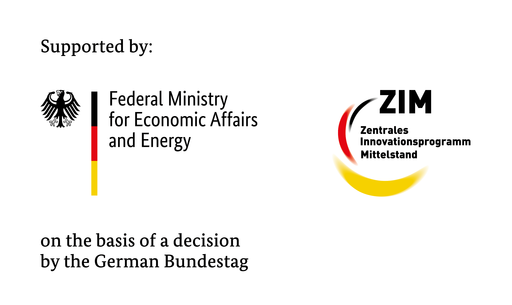Line Traction 3 - Drive technology
- Contact:
- Funding:
ZIM - Central Innovation Program for Small and Medium-Sized Enterprises, Federal Ministry for Economic Affairs and Energy
- Partner:
- Startdate:
2014
- Enddate:
2015
Problem Definition
Today's commercial vehicle drives are based on rigid technology that does not allow the drive power at the wheel to be controlled or manipulated. The differential plays a central role here, allowing the wheels to run at different speeds with the same propulsive force. In all-wheel drives, which are common in commercial vehicles, the engine torque is distributed to the axles in a rigid ratio via an additional differential. One problem today is the rigid drive load distribution and the resulting disadvantages such as traction problems, loss of power due to the rigid distribution ratio and drive tension.
Project Content
A promising approach for improvements is being developed by Müller Landtechnik as part of the "Line Traction 3" (LT3) project. By replacing the differential with a hydraulically controllable planetary gearbox, specific control of the individual wheels is made possible, which can be adapted to any road and load situation. This saves weight, improves traction and minimizes tire wear. It also allows torque vectoring in heavy vehicles.
The project aims to scientifically examine the technology for the first time and validate the idea using simulation and an initial physical prototype.
Upon completion of the project, it was demonstrated that the innovative idea works in simulation and test environments and that the system has great potential for mobile machines in various categories.
Publications
-
Anforderungen an das Antriebssystem eines schweren NFZ
Engelmann, D.; Geimer, M.; Müller, J.; Müller, W.
2015. ATZoffhighway, 8 (2), 26–37. doi:10.1007/s35746-015-0017-1

